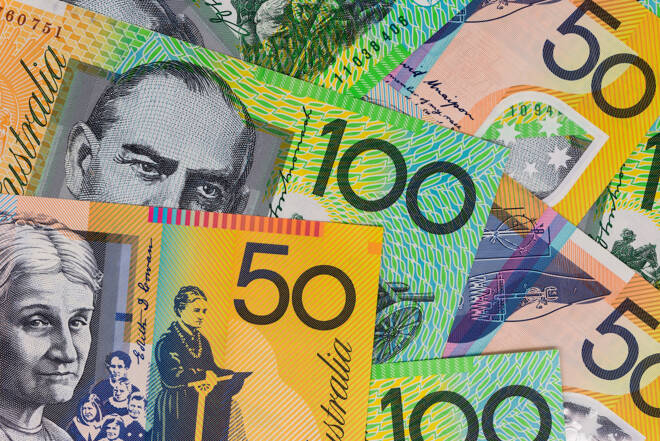Advertisement
Advertisement
AUD to USD Forecast: Australian Inflation and RBA Rate Hike Speculations
By:
Key Points:
- The AUD/USD declined by 0.35% on Monday, ending the session at $0.65401.
- US economic indicators impacted buyer demand for the AUD/USD before inflation figures from Australia and the US on Wednesday and Thursday.
- On Tuesday, investors should consider stimulus chatter from Beijing, US consumer confidence, US house prices, and Fed speeches.
Monday Overview of the AUD/USD
The AUD/USD declined by 0.35% on Monday. Reversing a 0.09% gain from Friday, the Australian dollar ended the session at $0.65401. The Australian dollar rose to a high of $0.65668 before falling to a Friday low of $0.65308.
Calls Grow for Beijing to Deliver Fiscal Stimulus
Concerns about the Chinese economy continue to influence near-term trends for the AUD/USD. Positive reports on spending during the Chinese New Year have failed to end calls for fiscal stimulus.
Over the weekend, China International Capital Corporation (CICC) reportedly highlighted the pressing need for Beijing to deliver fiscal stimulus. The call for fiscal stimulus came before lawmakers meeting in Beijing to discuss economic projections and policy.
The outcome of the Beijing meetings will likely influence the buyer demand for the Aussie dollar. Fiscal stimulus could boost demand from China, a boon for the Australian economy and the Aussie dollar. China accounts for one-third of Australian exports. 20% of the Australian workforce is in trade-related jobs.
Before the Beijing meetings, the Australian inflation numbers (Wed) for January will affect the RBA rate path. A hotter-than-expected inflation rate could raise bets on an RBA rate hike. Economists forecast the annual inflation rate to increase from 3.4% to 3.5%.
US Economic Calendar: US Consumer Confidence and the Fed
On Tuesday, US consumer confidence will be under the spotlight. Economists forecast the CB Consumer Confidence Index to remain unchanged at 114.8. An unexpected increase could signal a positive outlook for consumer spending. Upward trends in consumer spending could fuel demand-driven inflation and delay Fed plans to cut interest rates.
A higher-for-longer Fed rate path may impact disposable income and curb consumer spending.
Other stats include durable and core durable goods orders and housing sector-related data. However, the CB Consumer Confidence Survey will likely have more impact on Fed policy goals.
Beyond the numbers, investors must also consider FOMC member speeches. FOMC Michael Barr is on the calendar to speak. Views on inflation and timelines to cut interest rates would move the dial.
Short-Term Forecast
Short-term AUD/USD trends remain hinged on inflation numbers and central bank chatter. A hotter-than-expected Australian Monthly CPI Indicator could tilt monetary policy divergence toward the Aussie dollar. However, US inflation and Fed speeches will influence bets on an H1 2024 Fed rate cut.
AUD/USD Price Action
Daily Chart
The AUD/USD remained below the 50-day and 200-day EMAs, affirming bearish price signals.
An Aussie dollar return to the $0.65500 handle would bring the 50-day and 200-day EMAs into play. A break above the EMAs would support a move to the $0.66162 resistance level.
China stimulus chatter, US consumer confidence, and Fed speakers need consideration.
However, failure to break above the 50-day EMA would leave the $0.64900 support level in play.
A 14-period Daily RSI reading of 46.50 indicates an AUD/USD drop below the $0.64900 support level before entering oversold territory.
4-Hourly Chart
The AUD/USD hovered below the 50-day and 200-day EMAs, confirming bearish price trends.
An AUD/USD break above the 50-day EMA would support a move to the 200-day EMA. A breakout from the 200-day EMA would bring the $0.66162 resistance level into play.
However, a drop below the $0.65000 handle would give the bears a run at the $0.64900 support level.
The 14-period 4-Hourly RSI at 44.40 indicates an AUD/USD break below the $0.64900 support level before entering oversold territory.
About the Author
Bob Masonauthor
With over 28 years of experience in the financial industry, Bob has worked with various global rating agencies and multinational banks. Currently he is covering currencies, commodities, alternative asset classes and global equities, focusing mostly on European and Asian markets.
Advertisement
